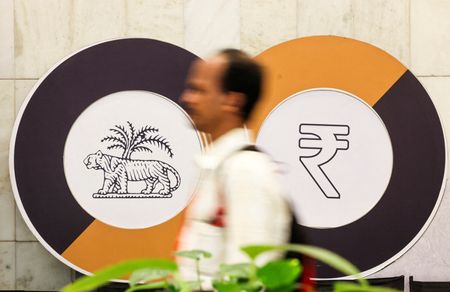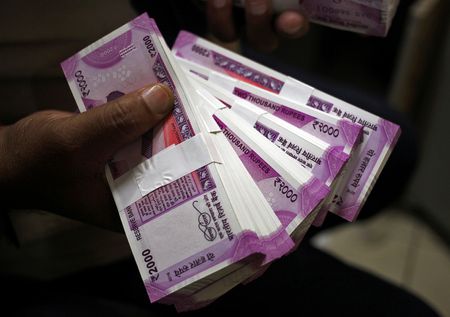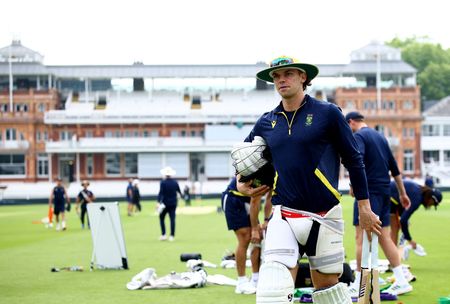By Nimesh Vora
MUMBAI (Reuters) – The Indian central bank’s unexpected and decisive intervention in the foreign exchange markets over the past two days, worth as much as $11 billion by one estimate, has reduced the bearish bias on the currency.
The Reserve Bank of India’s (RBI) intervention was brought on by a build-up in bearish bets against the rupee and the currency’s sharp slide over the past four months, analysts said.
DBS Bank estimates the RBI sold $10 billion, while Goldman Sachs’ estimate is near $11 billion — a scale that surprised the market as the central bank’s involvement had reduced since the appointment of Sanjay Malhotra as governor in mid-December.
This intervention helped the rupee rebound to 86.47 per U.S. dollar on Wednesday from an all-time low of 87.95 early on Monday.
Moreover, the 1-month dollar/rupee risk reversal — which measures the cost of a dollar/rupee call option relative to a put — dropped to the lowest since October 2024, indicating a decline in bearish sentiment.
“Bets against the rupee piled up and that is what likely made the RBI uncomfortable and made it act. What the RBI is trying to is to engineer two-way volatility,” said Dhiraj Nim, an FX strategist and economist at ANZ Bank.
The RBI did not immediately respond to an email seeking comment.
REER REASON
The rupee plummeted from 84 to a shade under 88 in four months due to India’s sluggish growth, equity outflows, increased hedging activity and the dollar’s rally due to U.S. trade policies.
This, combined with the new RBI governor’s more flexible stance on the currency, increased the bets against the rupee.
In late December, the one-month cost to bet against the rupee in the non-deliverable forward market was near its highest in over two years. The rupee options volume on the Depository Trust & Clearing Corporation (DTCC) had tripled from October to January.
“In order to curb one-side positions on the rupee, the RBI decided to act decisively,” said Upasna Bhardwaj, chief economist at Kotak Mahindra Bank.
Another factor may have been the rupee’s real effective exchange rate (REER) — a measure of the currency’s value against a basket of currencies of India’s largest trading partners.
Due to the central bank’s previous interventions, the rupee’s REER hit an all-time high in November, suggesting the currency was overvalued. But the currency’s recent slide would have corrected that, according to economists.
Goldman Sachs said with the rupee’s REER “estimated to have already dropped to the hypothetical mid-band”, the RBI was likely comfortable with a heavy intervention.
(Reporting by Nimesh Vora; Editing by Savio D’Souza)











